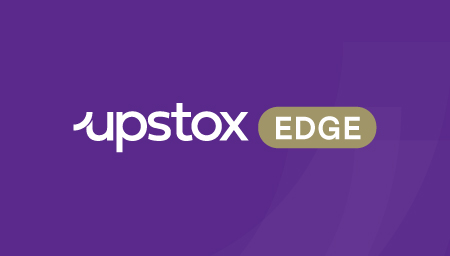Bull call spread strategy in options trading: 7 January 2022

A bull call spread strategy is an options strategy that traders implement when they are “moderately” bullish on a stock or an index. In this strategy, traders buy an ATM (at-the-money) call option and sell an OTM (out-of-the-money) call option to reduce their cost.
Let’s see how this strategy works.
Background
The Nifty Financial Services index is up nearly 4% this week and Bajaj Finance, a heavyweight in the index, has outperformed the index and risen almost 10%.
In the December quarter, the private lender’s asset under management (AUM) jumped 26% year-on-year to ₹1.8 lakh crore.The company said it is well capitalised, and its capital adequacy ratio stood at 27%, which is way above the required 15%.
Also, the lender acquired 26 lakh new customers, in Q3FY22, up 18%. Its total customer base stands at 5.5 crore.
Derivatives build-up
After touching the recent highs of ₹7,753 last month, the stock corrected to ₹6,493 in the market fall. It has now bounced back and is trading at ₹7,685 levels.
The January 8,000 strike price call option has a significant base suggesting that the stock can face resistance at this price.
This is about 4% higher than the current price of ₹7,685.
The lot size in the F&O contract is 125 shares per lot.
Action
Traders willing to take a moderately bullish position on it tend to initiate a bull call spread strategy that involves buying an ATM (at-the-money) call option of 7,700 strike price (January expiry) at ₹250 and selling an OTM (out-of-the-money) call option of 8,000 strike price (January expiry) at ₹135.
Now, if the stocks moves higher and closes at ₹8,000 levels on expiry, the trader will make a profit of ₹23,125 [Profit on long call option: (50 * 125 = 6,250) + profit on short call option: (135 * 125 = 16,875).
However, at the price of ₹8,000, the profit is capped at ₹23,125 because above this rate, every one rupee increase in premium of the long call position will be offset by a one rupee increase in premium of the short call position.
The break-even point of this strategy is calculated by adding the ATM (at-the-money) strike price (7,815) and the net premium paid (250
- 135 = 115). In this case, the break-even point is ₹7,815 (7,700 + 115). If the stock closes at ₹7,815 on expiry, the trader will have neither incurred a profit nor a loss.
In case the stock goes down, say below ₹7,700 levels, the trader's loss is limited to a net premium paid of ₹14,375 (115 * 125).
This strategy has a favourable profit to loss payoff of nearly 1.6:1, which tends to work in favour of the trader.
We hope this strategy was simple and easy to understand. You can try spotting it on the option chain and see if you are able to identify levels.
We’ll bring you a lot of strategies that will help you to identify trade setups easily.
Until then, happy trading!
About the author: Kush Bohra is a SEBI-registered investment advisor and an F&O expert.
If you haven't already done so, activate the F&O segment on your Upstox account! Click ** here** to begin F&O trading.
Here is a detailed guide on how to activate your commodities/futures/options segments on Upstox. Click ** here** to know more.
Disclaimer
Derivatives trading must be done only by traders who fully understand the risks associated with them and strictly apply risk mechanisms like stop-losses.
Wedo not recommend any particular stock.The stock names mentioned in this article are purely for showing how to do analysis. Take your own decision before investing.